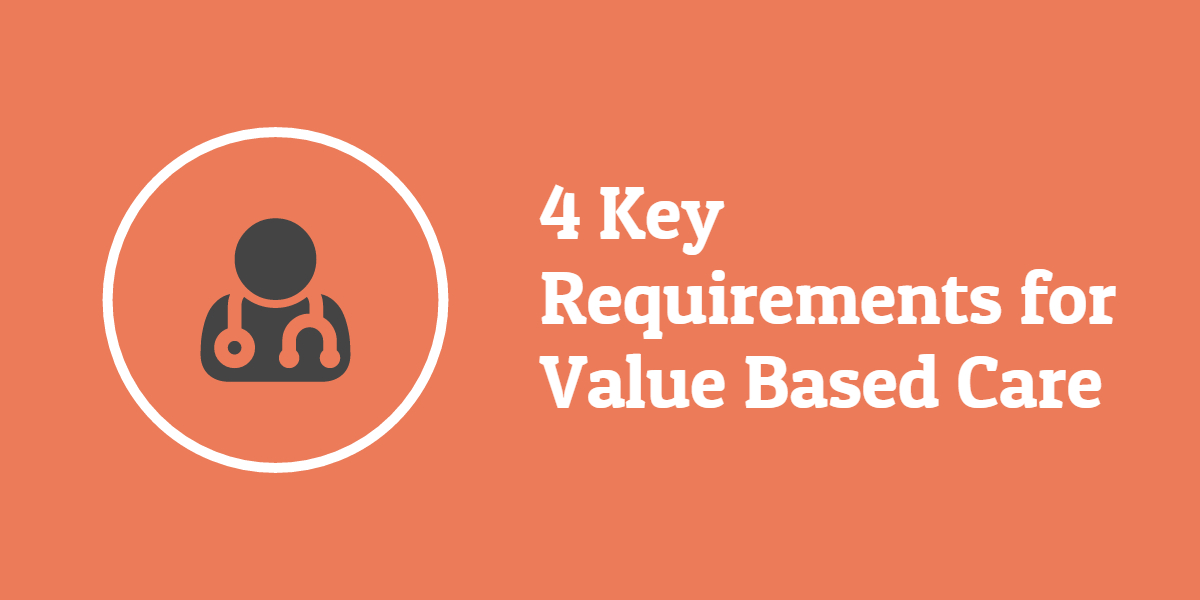One of the hottest topics this year has been alternative payment models. Transitioning from fee for service to a value-based reimbursement model has the opportunity to transform and streamline our healthcare system, but requires basic changes to the typical care delivery models. In our current model of reimbursing providers for health care, physicians and organizations are incentivized to order more tests and see more patients to be paid more. Value-based incentives ultimately mean you are paid for providing safe, appropriate, and quality care while keeping costs under control. In order to succeed in this transition, many challenges must be overcome by healthcare organizations.
Here are four key requirements for transitioning to value based care:
1. Strong Quality Measures
Many of the existing value-based reimbursement models rely on quality measures to ensure patients are being treated according to evidence-based medicine. Over the past few years, we have been transitioning from chart-abstracted methods for measure calculation to electronically derived measures. For these to work, organizations must align clinical and quality teams to streamline the workflow and ensure the measures are met while the patient is still within the physical walls of the practice. Standardized codes, values sets, and documentation are critical components for making sure your quality measures are accurately representing your patient care. It is critical that your team have an expert in each area of the puzzle to ensure these measures are captured in the EHR, maintained, and retooled each year as reporting organizations change quality strategies.
2. Comprehensive Population Health
Greater value at lower cost means managing patient populations outside of the organization walls. Strong population health management practices backed by the latest care guidelines are key to engaging patients to take an active role in their healthcare. The big factor here will be preventative health, requiring clinical teams to engage patients to stay on top of appointments and screenings. Once a condition has been diagnosed, the conversation must become more diligent for medication adherence, regular rechecks for clinical indicators, and patient-physician messaging. With comprehensive population health in place, clinicians are in a better position to prevent hospital readmissions and costly ER visits.
3. Predictive Analytics and Trending in Clinical Setting
Looking through a patient chart can be insightful, but having analytics pulling that data into meaningful information with trending data and possible solutions will transform care delivery. Big data does not equal digestible information in a care setting. How can you measure how a patient is handling a treatment if you can’t view results over time? Analytics will give deep insight to how a patient is responding to care, enabling clinicians to intervene before the patient is in a health crisis. Beyond clinical teams, analytics can show operational inefficiency that can be optimized. Small changes in clinical and operational workflow can mean more time for outreach and engagement, which provides great value to patients. Make sure your organization has an analytics plan, know the top 5 goals you want to tackle with that plan, and then select the right tool and consultants as needed to fill the technology and knowledge gap.
4. Breaking Down Silos
Organizations have to look at their patients holistically, sharing results and patient data in order for the model to work efficiently. Repeated tests when not needed for diagnosis add cost without adding value. Interoperability will be key to breaking down silos, but there is a significant trust issue that comes along with it as well. Do your clinical teams trust the labs from the urgent care center down the street? Does that lack of trust warrant drawing more labs from the patient in distress? Data sharing is critical in our road to alternative payment systems, but how that data is used and adopted into the care of the patient as they journey through the healthcare is another silo that should be broken down. Talk about your data exchange and sharing aspect of patient care and ensure your EHR infrastructure supports your goals. Then work together to ensure shared data is used effectively.
This major industry transition is no different than when Meaningful Use was in its infancy and few really understood the requirements, road map, and how to transform their organization. The first step is understanding what you need to provide more value to patients while keeping costs under control. Then approach each stage of the journey with clear goals and metrics in place.

